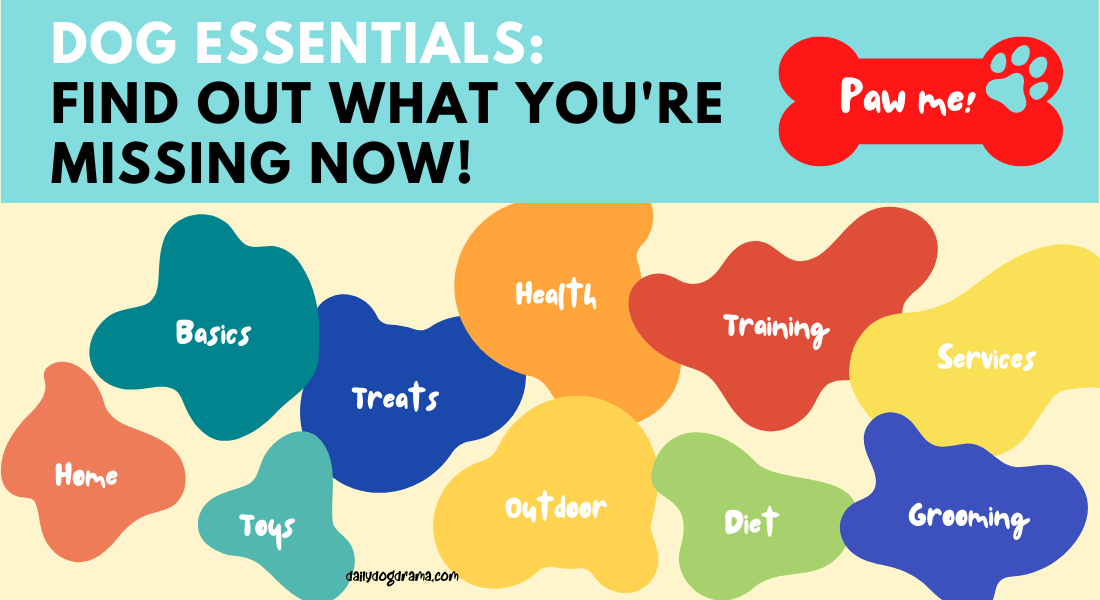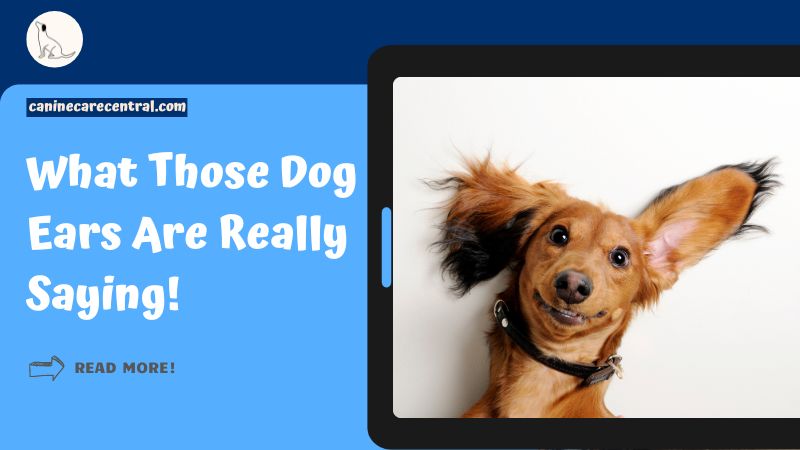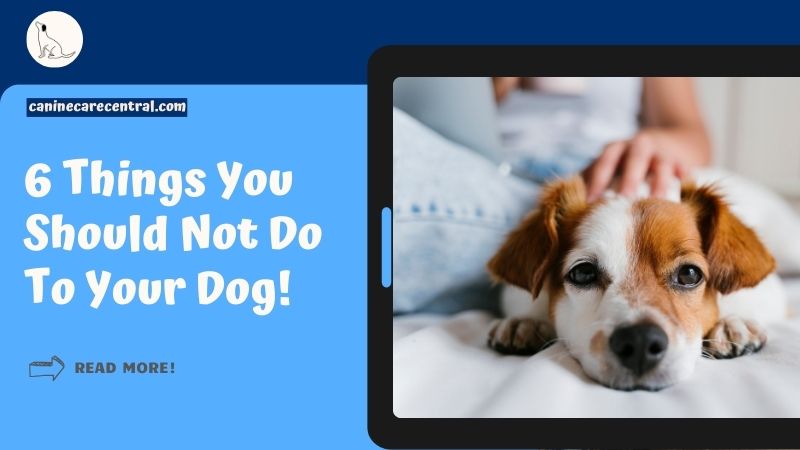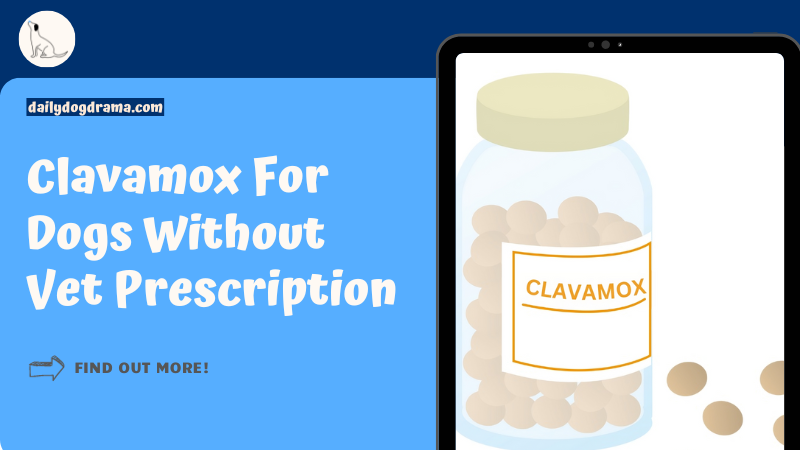Do you know what DOG ESSENTIALS you are missing out? Find out now!
Zack Keithy, our author, is a certified veterinarian technician (UC Blue Ash) for over 6 years (contact him here). The articles written here are based on his expertise and experience, combined with a review by our expert vet reviewers including Dr M. Tarantino. Learn more about us here.
The Great Dane is a beautiful, regal dog. Its massive size makes it an imposing sight, but its personality and sweet nature can melt the hardest of hearts.
But sometimes, things aren’t always as they seem.
While Great Danes certainly have a great appetite for food and attention, they also have a sensitive stomach that can lead to digestive issues if not properly cared for.
That is also the reason that leads owners to wonder, why is their Great Dane not eating?
There can be several different reasons why your Great Dane is not eating, including having a sensitive stomach, going through emotional trauma, or simply having too much to eat.
In this post, we reveal the different reasons why your dog is not eating and what you can do to encourage it to do so.
Medical Questions? Talk to a Veterinarian 24/7.
Connect one-on-one with a licensed vet who will answer your questions in minutes.
*Article may contain affiliate links to retailers like Amazon and Chewy. Learn more on our disclosure page.

- 12 Reasons Why Your Great Dane Is Not Eating Like Usual
- 1. Your Great Dane has a sensitive stomach
- 2. Your Great Dane is bored
- 3. Your Great Dane is just not hungry
- 4. Your Great Dane is getting too many treats
- 5. Your Great Dane's feeding schedule might be too short
- 6. Your Great Dane is going through hormonal changes
- 7. Your Great Dane was recently vaccinated or gone through surgery
- 8. Your Great Dane might have gone through emotional trauma
- 9. Your dog's diet was recently changed
- 10. Your Great Dane may have a toothache
- 11. Your dog’s food might have gone stale
- 12. Your dog could be sick
- How to Get Your Great Dane to Eat? 8 Solutions
- 1. Give your Great Dane more time
- 2. Reduce the amount of treats it gets
- 3. Let it have access to plenty of fresh drinking water
- 4. Let your Great Dane have plenty of exercise
- 5. Mix up the food you are feeding your dog
- 6. Make sure you’re feeding your Great Dane the right food
- 7. Try not to change your dog's diet too abruptly
- 8. Feed your Great Dane by hand
- How Long Can a Great Dane Go Without Eating?
- When Should You Bring Your Great Dane to the Vet if It Does Not Eat?
- In Conclusion: What to Do if Great Dane Not Eating?
12 Reasons Why Your Great Dane Is Not Eating Like Usual
1. Your Great Dane has a sensitive stomach
A sensitive stomach is one of the most common reasons why dogs won’t eat.
Great Danes tend to have sensitive stomachs, meaning that they do not digest all types of food as well as other breeds of dogs.
This can lead to bloating which can be uncomfortable and painful for them, and also a loss of appetite.
In particular, you got to ensure it does not pick up random items to eat like trash, and nonfood items like pee pads, wine corks, or even metal zippers.
2. Your Great Dane is bored
Dogs who have been left alone for long periods of time can become bored, and this can lead them to stop eating.
Ask yourself, did you change the types and amount of activities it gets each day?
Daily walks are essential and cannot be skimped on, but on the other hand, if you think that your dog is getting older, you need to adjust the exercise time too.
Make sure it has sufficient toys too like a Kong Classic XXL.
The key thing here is not to let your dog be inactive for too long.
3. Your Great Dane is just not hungry
Danes are a food-motivated breed and they love to eat, which means they can easily burn through a ton of calories in one sitting.
So when they’re not eating their full meal, it’s usually because they’ve already had enough—and you shouldn’t force them to eat more than that.
Doggy says, consider reading this too: Dog Ate String From a Rope Toy [What You Should Do]
4. Your Great Dane is getting too many treats
If your Great Dane is not eating, the problem may be that you’re giving them too many treats.
We all love our dogs, but sometimes we give them so many treats that we don’t realize how much extra food they’re taking in.
A great way to deal with this problem is by giving your dog very small amounts of treats throughout the day and making sure the total does not exceed 10% of its daily caloric intake.
Have you accidentally fed your dog twice? Find out what you can do.
5. Your Great Dane’s feeding schedule might be too short
Just because your Great Dane is large doesn’t mean that its feeding schedule should be more often than normal.
In fact, feeding too much food too often can cause your Great Dane to become unwilling to eat simply because they are too full!
Your Great Dane should be fed two meals a day in order to maintain its health and if you want to give them treats or snacks throughout the day, be sure that you’re limiting those treats to no more than 10% of their daytime calorie intake.
Doggy says, you might like this too: Pros and Cons of Neutering a Bernese Mountain Dog
6. Your Great Dane is going through hormonal changes
When female dogs go into heat they produce more estrogen than normal.
This causes them to be attracted to male dogs instead of food—and even though it seems counterintuitive, this is actually very common among female dogs who are going through hormonal changes!
The same goes for male dogs who might become easily distracted by females around them.
Neutering and spaying could be a good solution if you have no intention to breed your dog.
7. Your Great Dane was recently vaccinated or gone through surgery
When you bring home your Great Dane, you will likely notice immediately that they aren’t eating as much as usual.
This is because they are likely feeling very tired and weak and the first few days after vaccination or surgery are often the worst, as your Great Dane will be feeling ill, lethargic, and just not themselves—but this will pass in time!
8. Your Great Dane might have gone through emotional trauma
One potential aspect that is sometimes overlooked is the likelihood that your dog may be in mental suffering.
If it turns out that your dog’s refusal to eat is not being caused by a medical ailment, stress or worry may be the culprit.
Moving into a new home, having a new child (or even simply one nearby), changing routines and environments, or even acquiring a new partner can all cause stress in your dog.
9. Your dog’s diet was recently changed
If you recently altered your Great Dane’s food, he or she could not be accustomed to it.
Dogs might be picky eaters and decline to eat when you try to feed them for whatever reason, even if it has been on the schedule in the past.
If you recently switched from one brand to another, it can take your dog a few days to acclimatize.
Try this simple formula to get them accustomed to their new food:
- Start by mixing the old food with the new in a 75/25 ratio for the first 3 days
- Next 3 days, change the mix to 50/50
- Transition to a ratio of 75/25 new versus old for 3 days
- Finally, offer 100% of the new food from here on out
Most importantly, feed them the right food, not something that is meant for a puppy!
10. Your Great Dane may have a toothache
When your dog refuses to eat, it’s critical to screen out dental problems.
Just like with humans, if there is too much discomfort, it will cause us to lose appetite and stop eating.
Your Great Dane will have difficulty chewing if they have painful gums or tooth rot.
In certain situations, they may also vomit or sleep more than normal.
If you believe your pet has dental problems and needs to be treated, make an appointment with the doctor as soon as you can.
11. Your dog’s food might have gone stale
There can be a problem with how you prepare your dog’s meals, especially if you are giving it fresh food.
Leaving cooked meat out at room temperature for more than two hours (or even just one hour in the summer) may encourage the growth of germs that endangers dogs.
Therefore, it is usually advisable to reheat leftovers before reserving them.
Some dogs don’t mind eating leftover food, but that doesn’t mean it’s good for them.
As a result, you should always ensure that your dog consumes the food as soon as it is offered.
12. Your dog could be sick
When you notice that your dog isn’t eating, pay close attention to how they act because not all symptoms will be as obvious.
I would advise taking your dog to the vet for a checkup to see whether he or she is ill if this continues for longer than two days.
Visit the veterinary clinic as soon as you can if you develop any symptoms like nausea, vomiting, or diarrhea.
Hey there, sorry to interrupt but I wanted to tell you about an online vet service I’ve been using for years.
An in-person visit with one is great, but it’s not always an option.
Now, thanks to technology, you can speak to one without leaving your home.
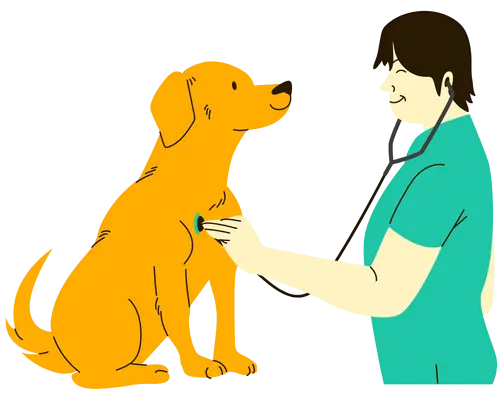
Got something to ask a vet?
Talk to one anytime, 24/7.
* Don’t use this service for emergencies.
Alternatively, a vet can come out to you instead (exclusive to our readers: use THEVETS15 for 15% off).
SCHEDULE AN APPOINTMENT HEREThank you. The rest of the article continues below.
How to Get Your Great Dane to Eat? 8 Solutions
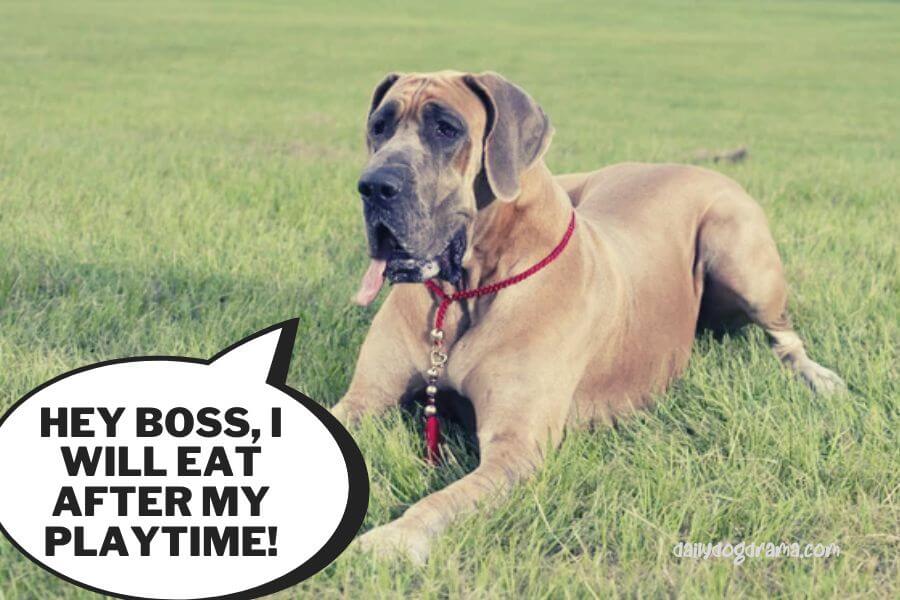
If your Great Dane is not eating, you will need a few creative ways to get them to do so.
It’s important to address the issue as soon as you notice something is off and also take note never to force feed them.
Your Great Dane has refused food for more than two days? See a veterinarian immediately.
Sometimes, it could be just that your Great Dane is being picky and refuses to eat anything you put in front of it.
Or it might be just a mood swing thing but this can go on for a day or two.
Here are a few things you can do to encourage it to start eating again.
1. Give your Great Dane more time
If your dog refuses to eat his food, try giving him more time before mealtime.
This can help him get hungry enough to eat his food when it’s time for dinner or breakfast.
When their meals are hurried, many dogs become irritable and may even refuse food completely.
Alternatively, you can try feeding in smaller amounts throughout the day so that it won’t feel as full after finishing one plateful.
2. Reduce the amount of treats it gets
If you’re having trouble getting your Great Dane to eat, you may be tempted to give it treats as a way of enticing it to eat.
But while this will work in the short term, it will actually make your dog less hungry for its regular food, which can lead to weight gain and health problems.
3. Let it have access to plenty of fresh drinking water
Keeping a clean bowl of water in the room where your dog spends most of its time will help it stay hydrated and avoid the risk of dehydration.
Not only that, but it will also help keep their digestive system working properly.
4. Let your Great Dane have plenty of exercise
Keeping your dog active is a great way to keep it healthy.
Not only will exercise help prevent obesity and diabetes, but it will also help keep their mind stimulated, which can reduce boredom-related behavior problems.
All these means it will have a great appetite when it’s meal time!
5. Mix up the food you are feeding your dog
One way that you can mix up what kind of food your dog eats is by mixing in some wet food with dry kibble.
You can do this by putting some wet dog food into a bowl with the dry kibble and mixing them together so that it forms one big mixture.
This will give your dog something new to taste while still giving him something familiar so he doesn’t get too excited about eating something new right away!
6. Make sure you’re feeding your Great Dane the right food
It’s crucial to make sure they’re eating nutritious, high-quality food for healthy growth throughout their lives.
Continuously giving them the same food each and every day might be very boring.
Instead, consider feeding your dog a variety of foods that are rich in various nutrients so that they can enjoy a healthy, balanced diet.
7. Try not to change your dog’s diet too abruptly
Slowly introduce new foods into their diet by mixing them with the food they already eat.
In this way, you can increase the amount of new food over time until it’s entirely replaced by the old food.
Most dog food manufacturers also provide handy advice on how best to switch out your dog’s diet.
8. Feed your Great Dane by hand
In addition to feeding your Great Dane from its food bowl, try feeding them by hand.
This is a great way to bond with your dog, as well as provide them with some much-needed attention and affection.
If you have more than one dog, it’s a good idea to feed each of them separately so that they don’t fight over any scraps that might be left over.
How Long Can a Great Dane Go Without Eating?
Most dogs, including Great Danes, can go up to 5 days without food.
However, this is highly dependent on whether it has access to fresh drinking water or not, without which it may not even last 2 or 3 days.
While it may survive for that period of time, it will be severely dehydrated and show signs of serious illnesses such as lethargy and becoming very weak.
Be sure to keep a very close eye on your dog!
When Should You Bring Your Great Dane to the Vet if It Does Not Eat?
In most cases, your Great Dane should recover its appetite quickly and if it does not show any signs of obvious distress, you can do without a visit to the vet.
However, there are certain symptoms that clearly indicate your dog is in trouble, in which case you should be seeing your veterinarian right away.
- Diarrhea
- Vomiting
- Gagging/coughing
- Not eating for more than 24 hours
- Not drinking any water
- Lethargy
- Swollen gums
In Conclusion: What to Do if Great Dane Not Eating?
There is usually no need to panic when you notice your Great Dane not eating, even a couple of hours past their meal time.
In most cases, he or she will feel hungry and head to their meal bowls and finish up what’s in there.
Just ensure that you keep the food clean and fresh when it wants to eat again and that there is plenty of water around.
Being a dog owner can be challenging, which is why we have lots of articles covering dog care tips such as why is your puppy not eating much and sleeping a lot, can chihuahuas live or sleep outside, can crating a dog stunt growth, and many more!
You’ve made it to the end, but I hope it’s not the end of our journey. We want to hear your voice! Share your thoughts, problems, suggestions, or anything related to your dog in the comments section. And don’t forget to join our newsletter today too.

